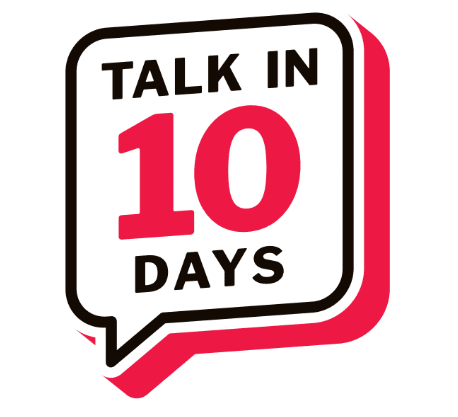Last year, I decided to go all-in on learning Polish. Forget dabbling with apps for five minutes a day; I was going to brute-force my way to fluency. I designed an experiment I called the Bimodal Blitzathon: for 100 consecutive days, I would read one Polish e-book while listening to its corresponding audiobook.
The numbers were intense. My daily commitment ranged from 30 minutes for a children’s story to over nine hours for the Polish translation of Stephen King’s Joyland. I consumed the 100 books. My passive vocabulary exploded. My reading speed went from painfully slow to comfortably fast. I could watch Polish films with Polish subtitles and follow about 60% of the dialogue. By all input-based metrics, I was crushing it. Through massive exposure, I had successfully built a warehouse of Polish knowledge in my brain.
Then came the moment of truth. A Polish friend, smiling, asked me a simple question: “Jak się masz?” (How are you?).
I froze.
My mind raced, scanning the thousands of words I’d logged, the complex sentence structures I had been exposed to. I knew the words to respond, they were stashed somewhere in my brain. But my mouth wouldn’t move. The conveyor belt from the warehouse to the loading dock was broken. In that moment of humiliating silence, I realized that massive input alone, while incredible for comprehension, had left my ability to actually speak at near zero.
Why Understanding Isn’t Speaking
I had fallen for a common assumption among language learners: that if you just understand enough words, you’ll automatically be able to produce them. My experiment proved this spectacularly wrong. The failure stemmed from two core misunderstandings.
First, Motor Memory is not Mental Recognition. Recognizing a word engages the temporal lobes of your brain, the centers for memory and auditory processing. But speaking is a physical act. It requires the motor cortex and the cerebellum, the parts of the brain that coordinate muscle movement. I had trained my brain to recognize Polish, but I had never trained my tongue, lips, and jaw how to dance the Polish dance. My mouth had zero muscle memory for the sounds.
Second, I was crippled by Choice Overload. Knowing 5k words is a liability when you’re put on the spot. The pressure to select the perfect word (never mind conjugate it correctly), and place it in a flawless sentence created a cognitive traffic jam. The result was paralysis.
Designing the 10-Day Fix: The Anti-Pareto Principle
I needed a new approach. If the problem was too much choice and no physical practice, the solution had to be the opposite. I made an “anti-Pareto” move: I threw out my 5,000-word vocabulary and shrank the entire language down to just 30 core words.
The criteria for these 30 words were strict:
High-Frequency: They had to be words that appear in the vast majority of everyday sentences, like jest (is), nie (no/not), to (this/it), ja (I), and gdzie (where).
Combinatorial Power: They needed to be “glue words” that could be easily combined to form real sentences: pronouns, versatile verbs, and basic connectors.
Phonetic Coverage: I had to confront Polish’s tricky consonant clusters and sounds, like in dlaczego (why) and dzisiaj (today).
With my list of 30 words, I designed a 10-day program to build the one thing I was missing: physical automaticity. I hired a native Polish speaker to record the words, and I created a simple PDF. No fancy app, no gamification, just an MP3 file and a sheet of paper.
The goal wasn’t to memorize the words, but to train my mouth to say them without thinking. The method was a multi-modal loop: for 10 minutes at a time, I would simultaneously READ the word, LISTEN to the native pronunciation, SPEAK it aloud, and FEEL the physical sensations of my mouth forming the shapes.
The schedule was intense. For the first three days, I did four to five of these 10-minute sessions daily. It was exhausting. My mouth felt clumsy. But I was building the muscle memory that my 100-book marathon had completely ignored.
The Breakthrough: From Clumsiness to Conversation
On Day 2, something clicked. A handful of the words that felt alien the day before suddenly felt… easy. My tongue just knew where to go. I was passing what my course now calls the first “gate”: the point where sounds flow naturally without conscious effort.
The program was designed to build systematically. On Day 4, I moved from single words to two-word “power pairs” like “To jest” (This is) and “Gdzie jest?” (Where is?) . On Day 5, I started plugging my vocabulary into simple sentence frames: “To jest bardzo dobry” (This is very good).
My brain was learning grammar organically, not by studying rules, but by feeling what fit. My mouth was handling the pronunciation on autopilot, freeing up my mind to focus on meaning.
By Day 11, the result was in. I was having basic, real-time conversations with AI. They weren’t elegant by any stretch of the imagination, but it was real speech. I could ask and answer simple questions, describe things around me, and express basic needs. The conveyor belt was built.
What This Means for Learning Hackers
This journey from a silent comprehender to a clumsy speaker taught me a few lessons that apply to hacking any new skill.
Massive Input Builds the Warehouse; Focused Output Builds the Conveyor Belt. You need both, but they are separate processes. Binge-watching foreign films will build your passive knowledge, but it won’t teach you to speak. You must schedule dedicated time for physical output practice.
Muscle Memory Is Faster Than Cognition. Athletes and musicians know this instinctively. Speaking is a physical skill. You have to drill the mechanics until they are unconscious. Your mouth needs to be faster than your brain.
Constraint Is a Feature, Not a Bug. When you’re under pressure, having 30 reliable words is infinitely better than having 5,000 fuzzy ones. Radical constraints eliminate choice paralysis and force creativity.
This personal experiment worked so well that I refined it and packaged it into a course called “Talk in 10 Days,” starting with Polish. It’s built on this core insight: to speak a language, you must first teach your mouth to move, building a small but unshakable foundation of physical automaticity. You can always build a bigger vocabulary later, but you can’t build it on a foundation of silence.

